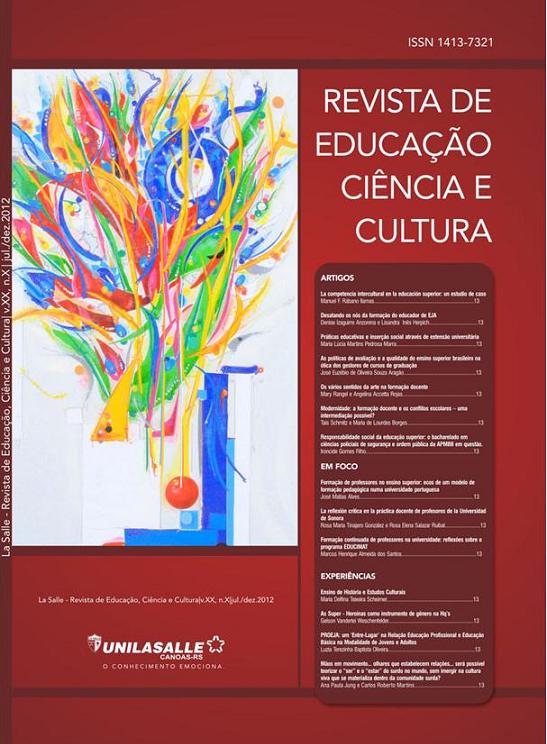HANDS-ON MOVEMENT ... GLANCES THAT ESTABLISH RELATIONS ... POSSIBLE CAUSE WILL THEORIZE "BEING" AND "BEING" OF THE DEAF IN THE WORLD, WITHOUT IMMERSED IN LIVING CULTURE THAT MATERIALIZES ITSELF WITHIN THE DEAF COMMUNITY?
DOI:
https://doi.org/10.18316/468Keywords:
Deafness, Deaf Community, Deaf Culture, Deaf identityAbstract
The article focuses on central instigate reflection on the growing body of research in the field of deafness, especially in the field of Education, departing from external actors to the cultural experiences of deaf and have led to different reactions and opinions within this community. Since the 80s, many were (and still are!) Movements fighting for recognition of rights in which the deaf are engaged. The speeches of deaf people, in many instances, has "hit the front" lines with listeners, who usually do not consider the desires, their own ideas and concepts that different aspects of teaching deaf has been consolidating. To this end, supports our weightings in the production of such authors as PERLIM, LOPES, Thomas and KARNOPP, references in this area. In presenting us "look inside", with ways to understand that lack the experiential aspects of the deaf community, outside researchers, there are many questions that point to a discontent deaf subject, as it is and the world is through an experience highly visual and experiential, where the palpable reality and motion signals is transcribed in the hands in space and build on experiences where they are immersed. Materiality deaf is expressed in look, in establishing the visual link between the subjects, in fact lived through the body deaf, which is within the hearing world. By questioning whether you can "analyze" and ponder the deaf, decode it and then translate it, just "looking" outside without being in the place of another, regardless of its complexity and its culture. With this article does not intend to point out mistakes or successes, nor find victims or perpetrators of practices that become increasingly present in the search fields of deaf education. We will, therefore, lead the reader to reflect on the issues punctuated here, trying to understand that, in our view, the experience and knowledge seen "inside" the deaf culture are essential to be able to understand this cultural subject. Thus, when we look at little or no participation of a growing number of hearing researchers in the interplay of the materiality of bodies deaf, from an outside perspective, almost as established by an observatory, we question the need for a real approach of theoretical concepts with a true cultural immersion in the deaf community, to perhaps get closer to understanding who is this other than this other one who wants to speak.Downloads
Published
2012-08-17
Issue
Section
Experiences
License
Authors must submit their manuscripts to be published in this journal agree with the following terms:Authors maintain the copy rights and concede to the journal the right of first publication, with the paper simultaneously licensed under the License Creative Commons attribution that permits the sharing of the paper with recognition of authorship and initial publication in this journal.
Since the articles are presented in this journal of public access, they are of free use, with their own attributions for educational and non-commercial purposes.
The Periodic Journal of Education, Science and Culture in http://www.revistas.unilasalle.edu.br/index.php/Educacao was licensed with a Creative Commons - Attribution - Noncommercial 3.0 Not Adapted.


